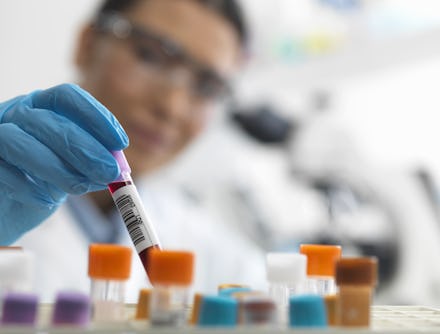These 7 States Drug-Tested Welfare Applicants — This Is What They Found

While it's almost an article of faith among conservatives that welfare recipients suffer from, among other vices, a special propensity for substance abuse, many progressives brush off the claim as an exaggeration and a stereotype used to justify tearing yet another hole in the American safety net.
But what if people seeking welfare actually use drugs less often than the average person?
In February, a report on Tennessee's welfare applicants revealed that merely 37 out of 16,017 applicants tested positive for illegal drug use. That rate comes out to 0.23% of total applicants.
ThinkProgress followed up on that news by taking a thorough look at data collected from seven states (including Tennessee) that require applicants for Temporary Assistance for Needy Families, which is the official name for the main federal welfare program, to undergo drug tests.
Altogether, Arizona, Kansas, Mississippi, Missouri, Oklahoma, Tennessee and Utah have spent nearly $1 million on programs designed to identify drug users, deny them benefits or place them in substance abuse treatment programs.
According to ThinkProgress' analysis of these state programs, welfare applicants don't test positive for drug use at unseemly rates. In fact, they exhibit use at rates lower than the general population.
The findings: According to the Substance Abuse and Mental Health Services Administration, 9.4% of the general population use illegal drugs. By contrast, in six of the seven states surveyed by ThinkProgress, fewer than 1% of welfare applicants tested positive for drug use, and in one state 8.9% did.
Here's the breakdown of the proportion of welfare applicants who tested positive for drug use:
Missouri 0.1%
The sample sets vary from a few thousand to more than 100,000. Four are taken from testing applicants over a multi-month period in 2014; three are from a multi-year sample between 2010 and 2014, or 2012 and 2014.
A few caveats: ThinkProgress' findings aren't scientifically grounded, and can't be considered conclusive evidence that welfare recipients rarely suffer from drug addiction. There are some potential confounding variables at work here. Methods for screening people to recommend them for drug tests vary greatly, and can be ineffective at determining who is likely to be suffering from substance abuse. Oklahoma found the highest rate of drug users likely because its screening process is far more aggressive in requiring testing than the others. (Although as a counterpoint it's worth noting that Florida's brief experiment with testing every single one of its welfare applicants a few years ago found only 2.3% of applicants to test positive.) Also, drug testing could narrow the pool of welfare applicants by inducing shame or fear in someone who thinks they could test positive.
But even when including the highest figures, these numbers are exceptionally low. Conservative fears that welfare recipients are using government money to fuel their drug addictions show no signs of being well-founded. The troubling reality is that drug addiction is typically seen as a moral failing rather than a public health issue that deserves its own kind of assistance.
Costly dragnet programs are exceedingly difficult to justify with these kinds of statistics. That just 0.23% of applicants in Tennessee tested positive for drugs should concern anyone claiming to be concerned about government efficiency.
"You are requiring more than 16,000 people to be screened for drug use based on the assumption that people who receive public assistance are more likely to use illegal drugs," ACLU Tennessee executive director Hedy Weinberg told WBIR. "There's no evidence to indicate that's true."
The numbers are so low that demands like Wisconsin Gov. Scott Walker's proposal to have all recipients of food stamps and unemployment insurance tested for drug use begins to looks less like a way to protect government funding and more like another way to shame the poor. Given the amounts of money used on invasive, ineffective testing, it would be better spent elsewhere.